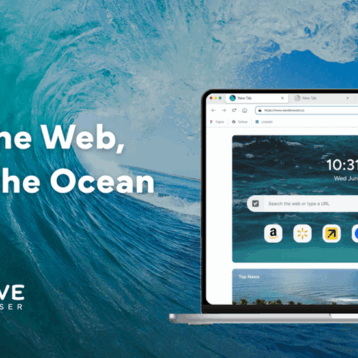
Imagine scrolling through a website that feels like walking through a maze – dead ends, confusing directions, and no clear path to what you need. Or perhaps you’ve downloaded an app that looked amazing in the screenshots, only to find it’s as user-friendly as a Rubik’s Cube for a toddler. Frustrating, right?
This is the stark difference between just having code that works and creating a truly captivating digital experience. While solid code is the foundation, it’s like having a house with only walls – functional, but not exactly inviting. A great digital experience goes far beyond just functionality, it’s about understanding the people who will be using it, designing intuitively, and weaving in elements that spark joy and connection.
The User is Your North Star: Navigating the World of User-Centric Design
Think of yourself as a detective, piecing together clues about your target audience. What are their needs, desires, and pain points? What makes them tick? User-centric design is about putting yourself in their shoes and crafting an experience that feels tailor-made for them.
This means digging deep into user research, creating detailed personas that represent your ideal users, and mapping out the entire user journey. It’s about asking questions like:
- What are users trying to achieve when they interact with your product?
- What obstacles or frustrations might they encounter?
- How can you guide them seamlessly towards their goals?
- What will make them feel satisfied and want to return for more?
Once you understand your user inside and out, you can start designing intuitive interfaces that feel like second nature. This involves carefully considering every aspect of the app or website design and development, from the information architecture and navigation flow to the visual aesthetics and microinteractions. A well-designed interface should feel like a friendly guide, leading users effortlessly to their destination.
But a great user experience isn’t just about being easy to use; it’s about creating an emotional connection. People are drawn to brands and products that resonate with them on a deeper level. This is where storytelling, branding, and thoughtful design elements come in. A delightful animation, a personalized message, or even a carefully chosen color palette can all contribute to a sense of joy, trust, and loyalty.
How Technology Powers Unforgettable Experiences
While understanding your users and designing intuitive interfaces are crucial, technology is the engine that brings your vision to life. Front-end development, using languages like HTML, CSS, and JavaScript, transforms static designs into interactive, dynamic experiences. It’s the magic that allows users to click, scroll, and engage with your product.
Behind the scenes, back-end development works its magic, using databases, APIs, and server-side logic to power the functionality of your digital product. It’s like the inner workings of a watch, ensuring everything runs smoothly and seamlessly.
And let’s not forget the exciting potential of emerging technologies. Artificial intelligence can personalize recommendations, automate tasks, and even predict user behavior. Augmented reality and virtual reality can transport users to new worlds, creating immersive experiences that blur the lines between the physical and digital realms. The possibilities are endless, and the future of digital experiences is limited only by our imagination.
The Power of Collaboration and Building Digital Experiences as a Team
Crafting exceptional digital experiences isn’t a solo endeavor. It takes a village, a team of talented individuals with diverse skills and perspectives. Designers, developers, content strategists, marketers – everyone plays a crucial role in bringing the vision to life.
Agile methodologies, with their emphasis on iterative development and continuous feedback, are essential for creating successful digital products. By regularly testing and refining prototypes with real users, teams can quickly identify and address any issues, ensuring that the final product meets and exceeds user expectations.
The Art of Data-Driven Decision Making
It’s not enough to just create a digital experience and hope for the best. You need to track its performance, measure its impact, and use data to inform your decisions. Key performance indicators (KPIs) like user engagement, conversion rates, and customer satisfaction are all valuable metrics that can help you gauge the success of your digital product.
But data doesn’t just tell you what’s working – it can also reveal areas for improvement. By analyzing user behavior, you can uncover pain points, identify opportunities for optimization, and make informed decisions about how to enhance the user experience. It’s a continuous process of learning and improvement, driven by data and a deep understanding of your users.
The Human Element of Digital Experiences
In the ever-evolving world of technology, it’s easy to get caught up in the latest buzzwords and trends. But at its core, creating a great digital experience is about connecting with people on a human level. It’s about understanding their emotions, anticipating their needs, and designing experiences that spark joy, trust, and loyalty.
So, the next time you embark on a digital project, remember that it’s not just about the code. It’s about the people who will be using it. It’s about crafting an experience that resonates with them on a deeper level, one that they’ll remember and want to come back to again and again. That’s the hidden art of crafting digital experiences that truly stick.










